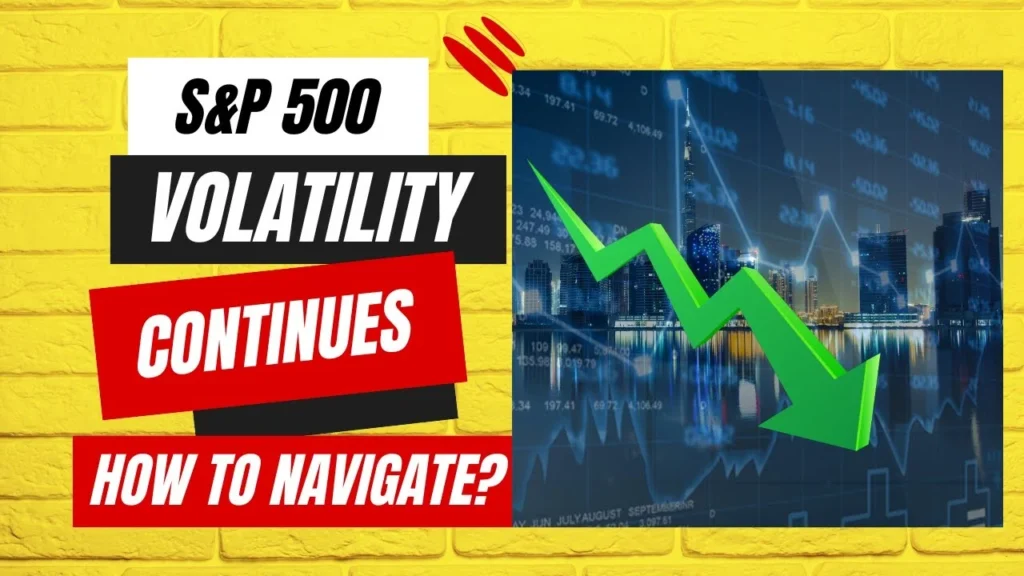Market volatility is a term used to describe the rapid and significant changes in the prices of stocks, bonds, commodities, and other financial instruments. It is often associated with uncertainty and can make investing and trading more challenging. During periods of market volatility, investors may experience drastic fluctuations in their portfolios, leading to feelings of anxiety and apprehension. In order to navigate these uncertain times, it is important to understand the strategies that can help mitigate the impact of market volatility and potentially even take advantage of the opportunities it presents. By implementing these strategies, investors can better position themselves to weather the storm and potentially emerge stronger in the long run.
Understanding Market Volatility
Market volatility refers to the degree of variation of trading prices over time. It is a measure of the speed and magnitude of price changes in the market. Volatility is often associated with uncertainty and risk, as it can lead to rapid and unpredictable price fluctuations. There are various factors that can contribute to market volatility, including economic indicators, geopolitical events, and investor sentiment.
Investors and traders use volatility as a key metric for assessing risk and making investment decisions. High volatility can present both opportunities and challenges for market participants. It can create potential for higher returns, but it also increases the likelihood of significant losses. Understanding market volatility is essential for navigating uncertain times in the financial markets.
Impact of Market Volatility on Investments
Market volatility can have a significant impact on various types of investments. For stocks, high volatility can lead to wide price swings, presenting both opportunities for short-term gains and risks of significant losses. In the bond market, increased volatility can affect yields and prices, particularly for lower-quality bonds. Additionally, commodities and currencies can experience heightened volatility during uncertain times, impacting investors and traders in those markets.
During periods of high volatility, investors may experience increased levels of stress and anxiety, leading to emotional decision-making. It is important for investors to stay focused on their long-term investment goals and maintain a diversified portfolio to mitigate the impact of market volatility on their investments.
Strategies for Navigating Uncertain Times
During times of market volatility, it is crucial for investors to remain disciplined and avoid making impulsive decisions. One strategy for navigating uncertain times is to maintain a well-diversified portfolio that includes a mix of asset classes, such as stocks, bonds, and alternative investments. Diversification can help spread risk and reduce the impact of volatility on the overall portfolio.
Another strategy is to focus on the long-term and avoid trying to time the market. Instead of reacting to short-term price movements, investors should stay committed to their investment plan and consider opportunities to rebalance their portfolio. Additionally, having a clear understanding of one’s risk tolerance and investment objectives can help investors stay focused on their long-term financial goals during turbulent market conditions.
Utilizing Hedging Techniques
Hedging techniques can be effective tools for managing risk during periods of market volatility. One common hedging strategy is to use options contracts to protect a portfolio from potential downside risk. By purchasing put options, investors can create a form of insurance against a decline in the value of their holdings. While hedging can provide a level of protection, it is important to carefully assess the costs and potential benefits of hedging strategies.
Another hedging technique is to use inverse exchange-traded funds (ETFs) or short-selling strategies to profit from potential market downturns. These strategies involve taking short positions on specific assets or market indices, which can help offset losses in a portfolio during periods of high volatility. However, it is crucial for investors to fully understand the risks and complexities associated with these strategies before implementing them.
Staying Informed and Seeking Professional Advice
Staying informed about market developments and economic indicators is essential for making informed investment decisions during uncertain times. Investors should closely monitor news and market trends, as well as stay updated on company earnings reports and economic data releases. Having access to reliable sources of information and analysis can help investors gain a better understanding of the factors driving market volatility.
Seeking professional advice from financial advisors and wealth managers can provide valuable insights and guidance during periods of market volatility. A trusted advisor can help investors assess their risk tolerance, review their investment objectives, and make informed decisions that align with their long-term financial goals. Professional advice can also help investors navigate complex financial markets and avoid making emotional decisions during turbulent times.
Opportunities in Volatile Markets
While market volatility can create challenges, it also presents opportunities for investors to capitalize on short-term price movements and asset mispricings. During periods of heightened volatility, there may be opportunities to acquire undervalued assets or take advantage of market dislocations. Additionally, active traders and investors with a high risk tolerance may find opportunities to profit from short-term price fluctuations in volatile markets.
For long-term investors, market volatility can create opportunities to dollar-cost average into the market by consistently investing a fixed amount of money at regular intervals, regardless of market conditions. This approach can help investors take advantage of lower prices during market downturns and potentially enhance long-term returns when markets recover.
Adapting Investment Strategies to Volatility
Adapting investment strategies to accommodate market volatility is essential for long-term success. During uncertain times, investors may need to reassess their asset allocation, risk management techniques, and overall investment approach. This may involve adjusting portfolio weights, reevaluating risk exposure, and incorporating alternative investments with lower correlation to traditional asset classes.
Furthermore, investors may consider incorporating active management strategies or alternative investment vehicles, such as hedge funds or private equity, to enhance portfolio diversification and potentially reduce the impact of market volatility. By continuously evaluating and adapting investment strategies to changing market conditions, investors can position themselves to navigate uncertain times and achieve their long-term financial objectives.
| Market Volatility | Explanation | Navigation Strategies |
|---|---|---|
| Definition | Fluctuations in market prices | Diversification, hedging |
| Causes | Political events, economic data | Asset allocation, risk management |
| Impact | Increased risk, opportunity for gain | Staying informed, long-term perspective |
| Strategies | Buy low, sell high | Value investing, dollar-cost averaging |
Market volatility is the fluctuation in market prices caused by various factors such as political events and economic data. To navigate uncertain times, investors can employ strategies such as diversification, hedging, asset allocation, and value investing. Staying informed and maintaining a long-term perspective are also key in managing the impact of market volatility.



